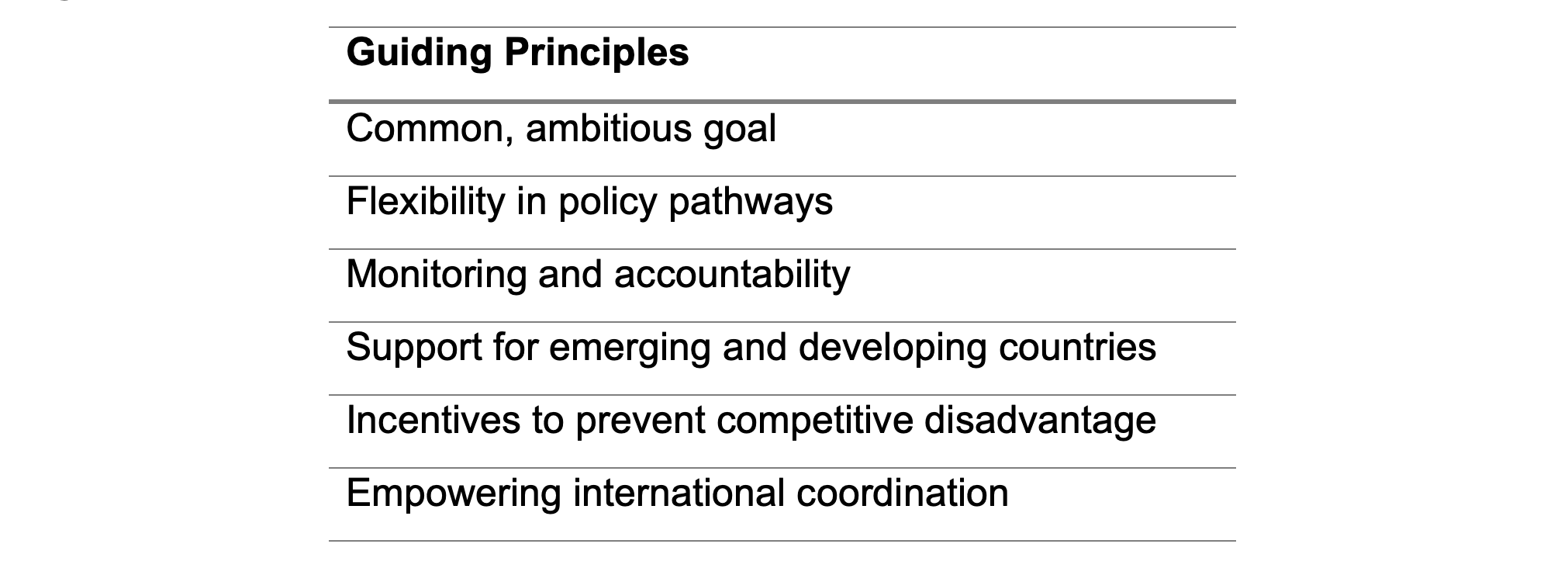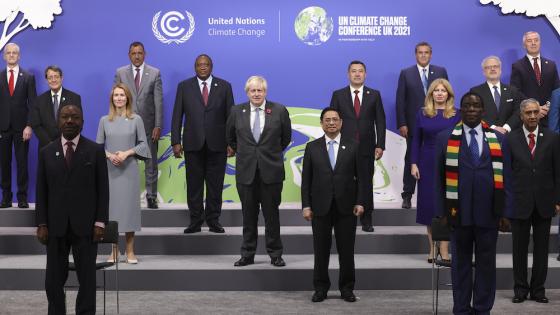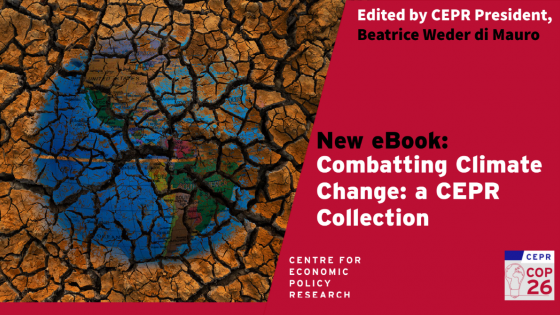Humanity is at a historic turning point: never before have we confronted so many problems that are inherently global, such as climate change, health risks, and biodiversity loss. At the same time, the realisation has dawned that the postwar multilateral order is dead. Russia’s invasion of Ukraine, its repercussions on global energy and food security, and current geopolitical tensions have put the final nails into the coffin of the traditional, rules-based, cooperative multilateral world order.
Fortunately, the seeds of a new approach – call it multilateralism 2.0 – have become visible through Chancellor Olaf Scholz’s ‘Climate Club’, aimed primarily at the international coordination of climate mitigation policies and endorsed at the 2022 G7 Summit. Though this initiative is sadly misnamed – ‘club’ sounds like an exclusive association of privileged members, but climate change is a global problem concerning the entire world community of nations – the Climate Club aims for a shared commitment to the Paris climate goals. It is open to different country pathways in achieving these goals, inclusive of developed, emerging, and developing countries, and supportive of existing international law. (For underlying issues from the economist’s perspective, see for example Weder di Mauro 2021.)
It is easy to get lost in the maze of institutions that form the international climate architecture within which the Climate Club is meant to work.
How should a so-called Climate Club navigate this jungle?
The answer is surprisingly simple. Climate change is not a problem that can be solved through a top-down policy architecture. What is required are straightforward guiding principles on which widespread agreement can be expected and then to allow the bottom-up initiatives of the public and private sectors to self-organise around these principles.
Consider an analogy: global value chains (GVCs) are fiendishly complex, usually spanning many sectors and countries in the production of most goods and even services. No one organises these GVCs as a top-down central planning exercise; instead, businesses organise themselves into these chains, guided by the principles of profit maximisation alongside legal and ethical considerations. These principles are sufficient for worldwide coordination. The coordination emerges at many levels, from local plants to multinational firms.
Climate action now requires guiding principles that spur spontaneous, climate-friendly self-organisation. This self-organising reconfiguration of the climate policy architecture needs to emerge at many levels, spanning the public and private sectors. The reconfiguration will take place at the micro level (e.g. decisions by individual households and firms), the meso level (e.g. decisions by sectoral organisations, NGOs, business and labour associations), and the macro level (international organisations). Under the appropriate principles, businesses can compete for profits without damaging the natural world; politicians can pursue their national policies while stabilising the climate and biodiversity; and international organisations and NGOs can do their work in ways compatible with the Paris Climate Agreement.
Accordingly, if the Climate Club is to be useful and effective, it must work in two ways: first, it must articulate the appropriate guiding principles to induce international cooperation on climate action; and second, it should provide guidance on how the principles can be implemented, giving public- and private-sector decision-makers an idea of how the climate policy architecture may change in response to the principles.
Thus far, this second level – indicating what to expect concerning the reconfiguration of the climate policy architecture – has received the most attention in policy circles.
Here, however, we focus on the Climate Club’s guiding principles for such a policy reconfiguration. In so doing, we gain insights into a new approach to multilateralism.
Multilateralism 2.0
To begin with, to clear our minds from prejudicial reactions to the name ‘Climate Club’, let us call the initiative the ‘Climate Alliance’ – perhaps as an intermediate step towards a better appellation to be chosen in the future.
The guiding principles underlying the Climate Alliance address each of these deficiencies. These principles provide a blueprint for multilateral action beyond climate change, thereby articulating a vision for the future of multilateralism. They are summarised in Figure 1.
Figure 1 Principles for Multilateralism 2.0
A common, ambitious goal
The common global goal of the Climate Alliance is specified by the Alliance’s most ambitious members, who set the goal in accord with the Paris Climate Agreement. This goal is not to be diluted in subsequent negotiations, avoiding the levelling-down problem.
Flexibility in policy pathways to achieve the goal
The focus of policy is on the goal, not the instruments to achieve this goal. The Climate Alliance gives different countries the latitude to pursue different policy pathways towards a common goal, since performance is to be measured exclusively in milestones towards the well-defined climate objective. Some countries may wish to achieve this objective through carbon taxes; others through an emissions trading system; yet others through regulations or enforceable social norms. This guiding principle should ensure that the rules governing climate action are suited to the diverse social, political, and economic conditions that different countries face. It also ensures that those affected by the rules participate in their formulation.
Monitoring and accountability
Despite the different pathways, all members of the Climate Alliance must make predictable, measurable progress towards the specified common goal. Since the ultimate objective is to achieve the aims of the Paris Climate Accord, progress towards this objective becomes the centre of reporting and monitoring – not progress on particular policy measures to achieve the objective (such as carbon taxes, emission trading, or regulations that phase out fossil fuels). The measures of progress towards the common goal must be comparable, including “a uniform measurement of the CO2 content of products and materials” (Federal Ministry of Finance 2021b).
Support for emerging and developing countries
Since the Climate Alliance seeks to support non-members in the achievement of its common objective, it is maximally inclusive, permitting rich and poor countries to make a common cause in the attainment of a common goal. Developing and emerging countries can receive support that enables them to achieve the same level of ambition as the industrialised countries belonging to the Climate Alliance. Such support could, for example, be achieved by Just Energy Transition Partnerships (Burton 2022).
As noted in the G7 Statement on Climate Club, the Climate Club aims to provide the support necessary for developing countries to join the Club and share its ambitious targets by “Boosting international ambition through partnerships and cooperation to encourage and facilitate climate action and unlock socio-economic benefits of climate cooperation and to promote just energy transition” (G7 2022).
As a complement, Just Energy Transition Partnerships have the potential to leverage assistance to developing countries to decarbonise energy and industrial sectors and promote transparency, including through financial and technical capacity support and technology transfer development and deployment, depending on their level of climate ambition.
Incentives to prevent competitive disadvantage
Monitoring and reporting must be accompanied by incentives such as graduated rewards for rule observance and sanctions for rule violation. These rewards and sanctions take the form of differential treatment of Climate Alliance members and non-members. In particular, the Climate Alliance ensures that its members do not suffer a competitive disadvantage. This means imposing a level-playing field on competition among countries – again through diverse policy pathways, such as a carbon border adjustment mechanism (European Council 2022), regulations, and so on.
The measured effects of these pathways on the common goal are to be comparable and thus form a coherent regime that prevents carbon leakage from Climate Alliance members to non-member countries, so that the emission reduction of member countries is not accompanied by an increase in emissions of non-members. Thereby the Climate Alliance puts pressure on non-members to adopt more ambitious climate protection standards.
Empowering international coordination
The rules above are to be embedded in a governance framework that empowers all relevant actors to contribute in appropriate ways. This framework should build responsibility for climate action in nested tiers – from micro to macro levels of decision-making – in a coherent, interconnected system. This may involve setting up an independent secretariat from relevant international organisations, focused on the collective agenda and led by co-chairs from an industrialized and a developing nation, with time-limited tenure. The organisation should include accessible, low-cost means of dispute resolution. Responsibilities for outcomes should rest at the level of national administrations, with sponsorship from national leaders (rather than particular government departments and ministries). The international coordination may also involve working groups focused on well-defined issues, drawing on institutional partnerships established by the G20.
These principles of the Climate Alliance – in accord with Ostrom’s Core Design Principles (Ostrom 1990, 2010) – constitute a new approach to multilateralism. They can be applied to other international problems.
References
Bhattacharya, A, D Kyriakopoulou, and N Stern (2022), The G20’s Crucial Role in Mobilising Climate Finance, Observer Research Foundation, 27 April.
Burton, J (2022), “Coal in 2022: South Africa’s Just Energy Transition Partnership”, E3G, 13 January.
European Council (2022), “Council agrees on the Carbon Border Adjustment Mechanism (CBAM)”, Council of the European Union, 15 March.
Federal Ministry of Finance (2021a), “Steps towards an alliance for climate, competitiveness and industry – building blocks of a cooperative and open climate club”, BMF, AA, BMWi, BMU and BMZ.
Federal Ministry of Finance (2021b), “The German government wants to establish an international climate club”, 25 August.
G7 (2022), “G7 statement on climate club”, 28 June.
Lima de Miranda, K, and D J Snower (2020), “Recoupling economic and social prosperity”, Global Perspectives 1(1): 11867.
OECD (2019a), “Better Life Index”.
OECD (2019b), “Better Life Index: Definitions and Metadata”.
Ostrom, E (1990), Governing the commons: The evolution of institutions for collective action, Cambridge University Press.
Ostrom, E (2010), “Beyond markets and states: Polycentric governance of complex economic systems”, American Economic Review 100: 1–33.
Stern, N, and H P Lankes (2022), Collaborating and delivering on climate action through a climate club: An independent report to the G7, LSE Consulting.
Weder di Mauro, B (2021), “Combatting climate change: A CEPR collection”, CEPR Press.




